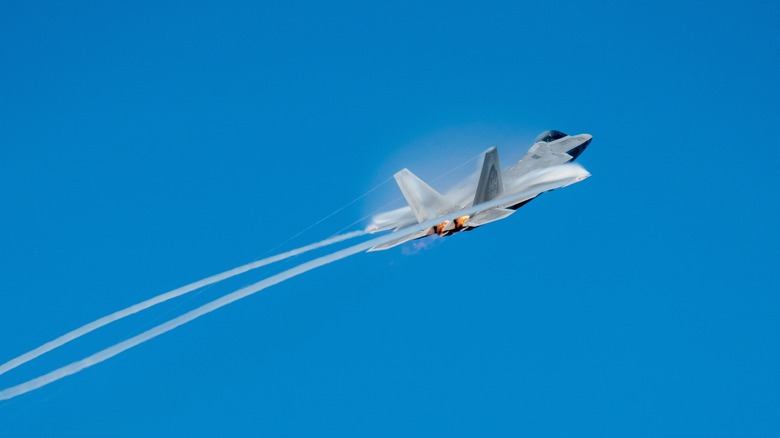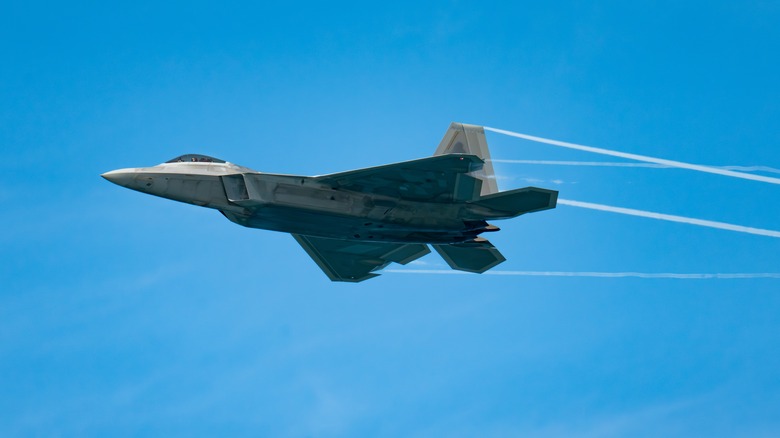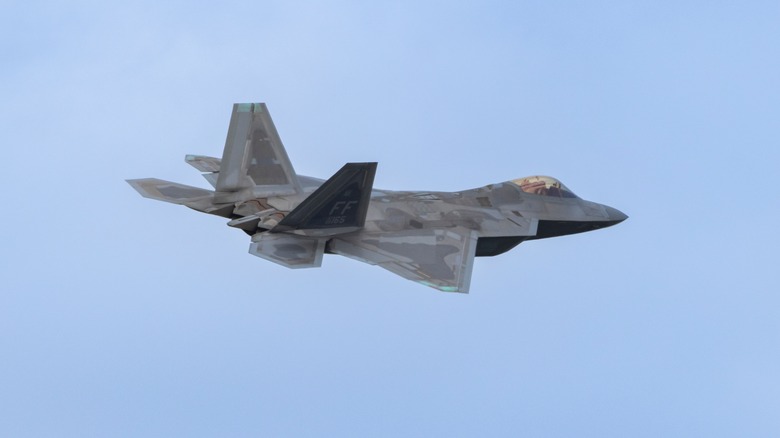The Stealthiest Fighter Jet Ever Built (So Far)
Even two decades after its debut. the F-22 Raptor remains the stealthiest fighter jet ever built. While newer designs like America's F-35 Lightning II – which China claims it can track – and China's J-20 have entered the scene, none combine stealth, speed, and agility as completely as the F-22. Its shape and materials drastically reduce its radar signature.
Unlike previous jets that carried missiles or bombs externally, the F-22 hides its full weapons load inside. This eliminates radar-reflective hardpoints, decreasing its observability by adversarial systems even while fully armed. On top of that, the F-22's body is covered in radar-absorbing material and built with advanced composites and titanium to avoid detection across a wide range of frequencies.
But stealth alone isn't what makes the Raptor different. It can also cruise at supersonic speeds without using its afterburners (a feature called supercruise), which reduces the infrared trail that defensive weapon systems use to track and engage aircraft. This gives it an additional level of stealth, letting the F-22 pilot enter or exit encounters on their terms, before enemies know they're there.
Superior situational awareness and first-strike capability
The F-22 Raptor's integrated avionics and sensor fusion give the pilot unmatched awareness of the battlespace, allowing the pilot to make faster, more confident decisions. Its radar is a big part of this. The F-22 uses the AN/APG-77 AESA radar, which not only tracks multiple targets at once but does so before adversaries detect the Raptor.
In a fight, the F-22 can almost always get the first shot. It carries six AIM-120 AMRAAMs and two AIM-9 Sidewinders internally for air-to-air operations. Against ground targets, it can carry two 1,000-pound JDAMs or Small Diameter Bombs, all without sacrificing stealth. Officials got a good look at the Raptor's capabilities during the Northern Edge 2006 exercise.
In this simulated combat, F-22s took out 108 targets with zero casualties against top U.S. fighter jets, including the F-15, F-16, and F-18, according to the USAF. Even surface-to-air threats had trouble locking on, thanks to the jet's stealth profile and high-speed maneuvering. The F-22 wasn't just designed to survive a fight but to win it before it even begins. That's what gives it its edge.
Built for future conflicts, not just past ones
Even though the F-22 fighter jet was discontinued in 2011, the U.S. Air Force has poured billions into upgrades that keep it mission-relevant. These include new sensors, communication systems, and defensive systems that extend the aircraft's dominance into the next decade. Modernization efforts include the addition of Link 16 datalink transmit capabilities, allowing the F-22 to connect with F-35s and other friendly aircraft. The Air Force is also integrating an Infrared Search and Track (IRST) system, a defensive infrared suite, and open-architecture software that makes future upgrades faster and cheaper.
Even as talk shifts to sixth-generation fighter jets like America's F-47, the Air Force isn't letting go of the F-22 just yet. With modernization efforts set to continue into the 2030s, including multiple programs costing up to $4.3 billion between fiscal 2023 and 2029, the jet is expected to remain relevant for some time.
Stealth alone doesn't make a fighter jet dominant. However, when you combine it with speed, advanced sensors, and constant upgrades, the F-22 Raptor holds its title: the stealthiest, most capable air superiority fighter flying today.


